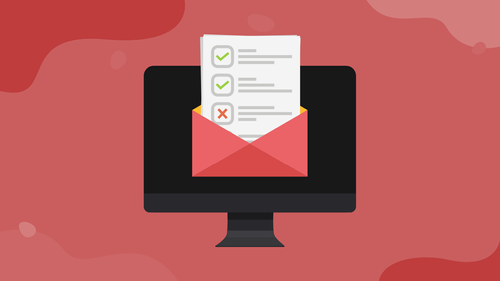Angular, as a powerful front-end framework, offers different approaches for form validation. Among them, template-driven validation is a popular choice for developers. In this comprehensive guide, we will explore the world of template-driven email validation in Angular, step by step, helping you master this crucial aspect of building web applications.
Understanding Template-Driven Forms in Angular
Before diving into email validation, let's grasp the core concepts of template-driven forms in Angular:
Introduction to Template-Driven Forms: An overview of what template-driven forms are and how they work in Angular.
When to Use Template-Driven Forms: Explore scenarios where template-driven forms are the ideal choice.
Key Differences from Reactive Forms: Understand how template-driven forms differ from reactive forms.
Setting Up an Angular Project
To start implementing template-driven email validation, you need to set up an Angular project. This section covers:
Creating an Angular Project: Step-by-step instructions on creating your Angular project.
Adding Template-Driven Forms: How to add template-driven forms to your Angular application.
Binding to Form Fields: Connecting your HTML form fields with Angular components.
Angular Template-Driven Email Validation
Now, let's get to the heart of the matter - email validation in template-driven forms:
Email Validation Basics: Understand the fundamentals of email validation and its importance.
Email Validation Directives: Explore built-in Angular directives for email validation.
Custom Email Validators: Learn to create custom email validators tailored to your needs.
Displaying Validation Errors: How to display validation error messages to users.
Examples and Templates
Here, we'll provide practical examples and templates for implementing email validation in template-driven forms:
Basic Email Validation: Walkthrough for basic email validation in an Angular template-driven form.
Custom Validation Example: A real-world example of creating a custom email validation function.
Validation Messages: Tips on customizing validation messages for a better user experience.
Advanced Techniques
Explore advanced techniques for template-driven email validation in Angular:
Cross-Field Validation: How to validate email confirmation fields to ensure they match.
Pattern-Based Validation: Implementing pattern-based email validation for specific requirements.
Handling Server-Side Validation: Strategies for integrating server-side email validation in your Angular app.
Frequently Asked Questions
This section addresses some of the most common questions developers have about template-driven email validation in Angular:
1. How can I make email validation case-insensitive?
Explore methods to perform case-insensitive email validation in your template-driven forms.
2. Can I integrate third-party email validation services with template-driven forms?
Learn how to incorporate third-party email validation services for more comprehensive validation.
3. Are there performance considerations when using template-driven email validation in large forms?
Discover tips for optimizing the performance of your Angular application when dealing with extensive forms.
4. What are the best practices for testing email validation in template-driven forms?
Uncover best practices for unit testing email validation in your Angular project.
Conclusion
By the time you reach the end of this guide, you will have gained a deep understanding of template-driven email validation in Angular. You'll be ready to implement robust, user-friendly email validation in your web applications, making your forms more reliable and user-centric. Elevate your Angular development skills with this mastery of email validation techniques.



